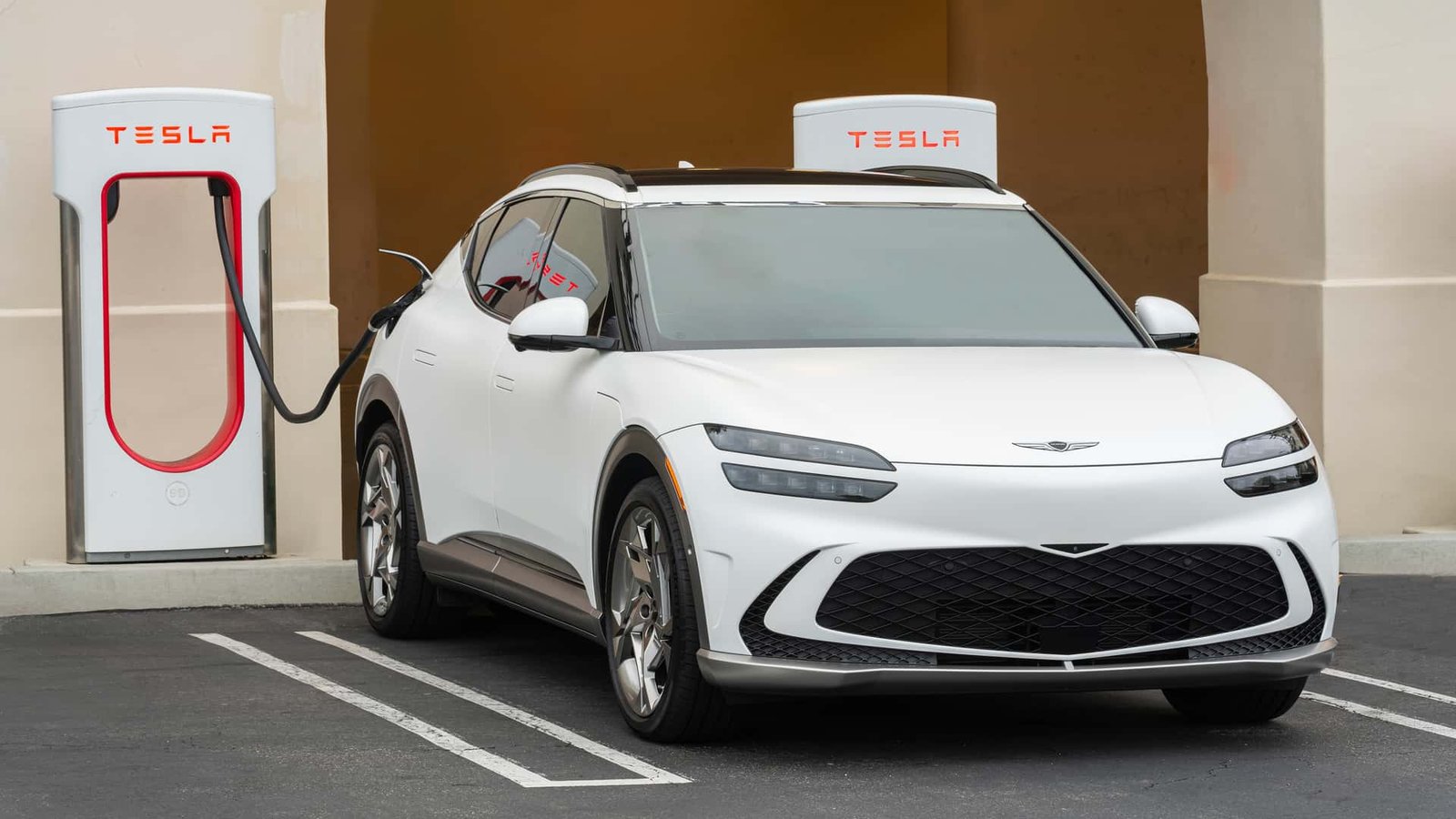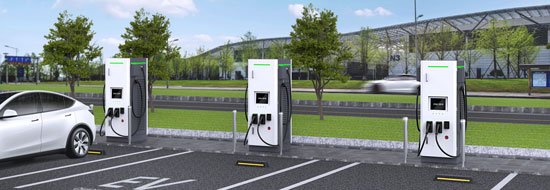Most electric vehicles on sale today run on a 400-volt architecture, but there are a handful of models that double that and operate at 800 volts. The number of 800-volt EVs is on the rise, and this is being touted (by those manufacturers that have already adopted it or want to adopt it) as the superior solution since it allows for higher charging speeds, improved efficiency, better performance, and the use of thinner cables as well as a reduction in the weight and size of some components.
Even so, 400-volt EVs have their advantages, the biggest one being the cost of manufacturing. This could be passed along to the consumer, who will have to pay less for a new electric vehicle. Another plus point for 400 volts is that most charging stations were designed with this voltage in mind, which means there should potentially be fewer charging issues when you go to plug in, and you can expect a more consistent charging behavior.
Manufacturers that have not moved to 800 volts and have no plans to do so say there is no need to go beyond 400 volts since this is enough for both regular EVs and even some with some performance car aspirations.

It’s worth noting that when we say 400-volt or 800-volt EV, we don’t actually mean the exact voltage, but rather the nominal voltage at about 50 percent state of charge. Each of these two designations refers to a range of voltages the EV operates at, not a fixed number that always stays the same.
In other words, a 400-volt EV can run between under 300 and just over 450 volts, and this mainly depends on the state of charge. As a general rule for Tesla vehicles, the nominal voltage is usually around 350 volts for smaller batteries and about 400 volts for larger packs, although this doesn’t apply to vehicles with LFP packs.
But while there are clear advantages to an 800-volt system, the answer to which is better may not be as cut and dried as it may initially seem, as there are ideal use cases for both that don’t always overlap. Let’s look at the differences between 400-volt and 800-volt EVs in more detail.
Brief History Of 800-Volt EVs

Rimac created the 800-volt EV architecture technology, which it put in its 1,914 horsepower, quad-motor Nevera electric hypercar as a showcase of what it’s capable of. The Croatian EV technology company also passed the technology on to manufacturers it partnered with, like the Hyundai-Kia group and Porsche, which then supplied it to Audi.
China’s Xpeng also developed its own 800-volt architecture and put it in its new G9 electric SUV, and Lotus has its proprietary 800-volt platform that underpins its Eletre SUV and allows for very fast charging. Lucid has created an even higher-voltage platform in-house, which has a maximum voltage of 900 volts, and it is used in the Air sedan and the Gravity SUV—this very high-voltage platform partly explains why the Lucid Air is so efficient and has such a long range.
Advantages Of 800-Volt EVs

Charging power is calculated by multiplying the voltage by the amperage. This means that an 800-volt system requires half the amps that a 400-volt system needs to deliver the same charging speed. On paper, at least, 800-volt trumps 400-volt, especially if DC fast-charging speed is a prime concern.
It’s worth noting that the higher the charging current (amperage) is, the more losses it incurs (this rises exponentially the higher the current is), so if you raise the voltage and lower the current, losses are lower and everything operates more efficiently.
Another advantage has to do with the lower-amperage current that an 800-volt EV uses internally. This allows for thinner cables inside the system, which produce less resistance and less heat, and therefore enhance the entire system’s efficiency. This would also apply to the cable used to charge an 800-volt EV, which could also be thinner, lighter, and easier to handle, and there would be less of a need to cool the cable.
When charging an 800-volt EV, the charging cable, connectors, and all the other parts that transmit the electricity should stay a bit cooler compared to when you’re charging a 400-volt vehicle at a similar rate.
Since a lower current is passing through the battery of an 800-volt EV, in theory, it should produce less heat and therefore enhance battery longevity too, even in vehicles that are frequently DC fast-charged (although this is also heavily dependent on the battery chemistry).
However, 800-volt EVs are still too new for conclusive battery degradation statistics to be available. Many Hyundai and Kia EV owners who have 800-volt E-GMP-based models that they regularly fast-charged report relatively low yearly degradation, but we have no studies to point to for confirmation yet.
Advantages Of 400-Volt EVs

The main advantage of a 400-volt architecture in an EV is cost. This is older and more proven tech, so the cost of components (which most automakers source from third-party suppliers) has gone down. This type of EV should also be more familiar to EV technicians and should therefore be easier to service, although the differences between 400-volt and 800-volt EVs aren’t that significant; a knowledgeable technician should have no trouble working on both.
With a 400-volt EV, you should also encounter fewer charging issues when trying to charge from a public DC fast charger. These have been designed to work with 400-volt EVs, so when you plug in an 800-volt EV, some extra communication between the car and the charger is required, and this is an extra step that could prevent charging in certain situations.
The 800-volt Porsche Taycan has an extra component that allows it to top up via a 400-volt charger called a charge booster, which 400-volt EVs don’t need, and this adds to the cost and complexity of the vehicle. However, Hyundai-Kia vehicles built on E-GMP just use the rear motor to jump the voltage when charging from a 400-volt charger, which seems like a much simpler solution than what Porsche is doing, and these vehicles seem to provide pretty consistent charging behavior when hooked up to a 400-volt station.
Should Your Next EV Run On 800 Volts?

While it’s widely acknowledged that 800-volt technology is the way forward for EVs, not all manufacturers seem convinced. BMW, for instance, has announced that its Neue Klasse platform, which it will use as a base for its entire EV lineup, will have an 800-volt architecture. Mercedes has also announced that it will give its larger EQ models a major overhaul to bring them up to 800 volts, and the all-electric CLA sedan will also run at 800 volts.
Geely, which owns Volvo, has also announced plans to roll out 800-volt EVs, so the tech could also find its way into a Volvo in the not-too-distant future. Other manufacturers, though, such as Toyota, Ford, Honda, and Renault in Europe, have announced no plans to move to 800 volts, so this doesn’t seem like an industry-wide trend quite yet, although that might change in the next few years.
The bottom line for the EV user is that the vehicle’s voltage doesn’t change the experience significantly. There is no perceivable difference between 400-volt and 800-volt EVs from the end user’s perspective, so picking one over the other based on this alone (unless you are a tech-savvy EV aficionado) doesn’t make much sense yet.
[ad_2]
Source link




